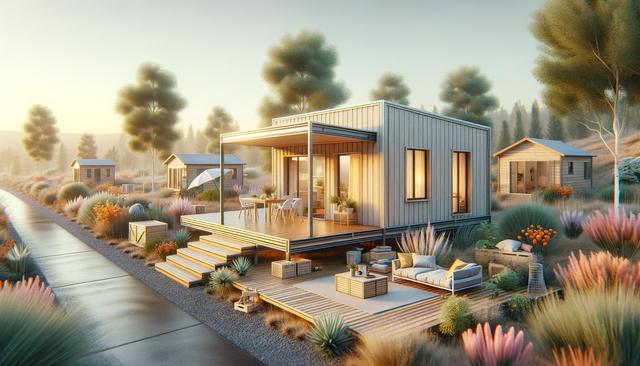
Modular Homes for Seniors: Your Comprehensive Room-by-Room Efficiency Guide
Living Room Design: Comfort and Accessibility
The living room in a modular home for seniors is more than just a place for relaxation. It is a central hub where comfort meets accessibility. Designing an ideal living room starts with choosing furniture that is both ergonomic and easy to move around. Look for chairs and sofas with firm cushions and higher seating to make sitting and standing easier. Adjustable recliners can offer additional comfort for those who need it. Consider adding light fixtures that are easy to operate, such as touch lamps or those with large switches, to enhance convenience.
Incorporating technology can significantly improve living room efficiency. Smart home systems that control lighting, temperature, and entertainment through voice commands or mobile apps can make daily life simpler and safer. Additionally, keeping pathways clear and wide enough to accommodate mobility aids such as walkers or wheelchairs is crucial for maintaining independence.
Kitchen Layout: Safety and Efficiency
The kitchen is often the heart of the home, and for seniors, it must be designed with safety and efficiency in mind. Start by choosing appliances that are user-friendly, such as those with large, easy-to-read displays and simple controls. Wall ovens and drawer dishwashers can be beneficial, reducing the need to bend down or reach up high. Countertops at varying heights can cater to different needs, providing a comfortable space for meal preparation.
Storage solutions play a vital role in kitchen efficiency. Opt for pull-out shelves and lazy Susans in cabinets to make accessing items easier. Consider installing lever-style handles on cabinets and drawers to replace traditional knobs, which can be difficult for those with arthritis. Safety features, such as non-slip flooring and adequate lighting, help prevent accidents and make the kitchen a safe space for seniors to enjoy cooking and dining.
Bathroom Features: Safety Comes First
Bathrooms are areas where safety is paramount, and thoughtful design can significantly reduce the risk of accidents. Installing grab bars near the toilet and in the shower or bath is essential for providing support and preventing falls. Consider a walk-in shower with a bench and handheld showerhead to accommodate varying mobility levels comfortably. Non-slip mats or textured tiles can further enhance safety by reducing slip hazards.
For those with limited mobility, elevated toilets and vanities provide ease of use and accessibility. Consider installing touchless faucets for ease of operation and enhanced hygiene. Adequate lighting, including nightlights, is crucial in preventing accidents during nocturnal bathroom visits, making the space both safe and convenient.
Bedroom Design: Restfulness and Accessibility
The bedroom should be a sanctuary of restfulness and accessibility for seniors. Start by selecting a bed with the appropriate height, allowing easy transfers in and out. Adjustable beds that permit head and foot elevation can provide additional comfort for those with specific health needs. Position the bed to allow space for mobility aids if necessary.
In terms of storage, choose wardrobes and dressers with easy-access features, like pull-out shelves and drawers. Consider lowering closet rods to a reachable height and using open shelving for frequently used items. Adequate lighting, including bedside lamps with touch controls, enhances convenience and safety, ensuring that seniors can move around their bedrooms without difficulty.
Outdoor Spaces: Enjoyment and Safety
Outdoor areas are an extension of the living space in modular homes for seniors, providing an environment for relaxation and recreation. Designing these spaces with safety and enjoyment in mind begins with level pathways and non-slip surfaces to prevent falls. Consider adding handrails to steps or inclines for additional support.
Seating options should be comfortable and easy to get into and out of, with armrests providing extra support. Raised garden beds can offer an opportunity for gardening without the need for bending or kneeling, which can be beneficial for those who enjoy horticultural activities. Lastly, ensure that outdoor lighting is adequate to enhance visibility during the evening, making the space inviting and safe.
Conclusion: Crafting the Perfect Modular Home
Designing a modular home for seniors involves a thoughtful approach to every room, ensuring comfort, safety, and accessibility. By incorporating smart design features, such as ergonomic furniture, user-friendly appliances, and safety enhancements, these homes can provide a harmonious living environment tailored to the unique needs of an aging population. Whether opting for a compact one-room layout or a spacious four-room configuration, the ability to customize each space ensures that seniors can enjoy their homes with ease and independence. With these considerations in mind, modular homes stand out as a well-regarded choice for creating an efficient and comfortable living experience for seniors.